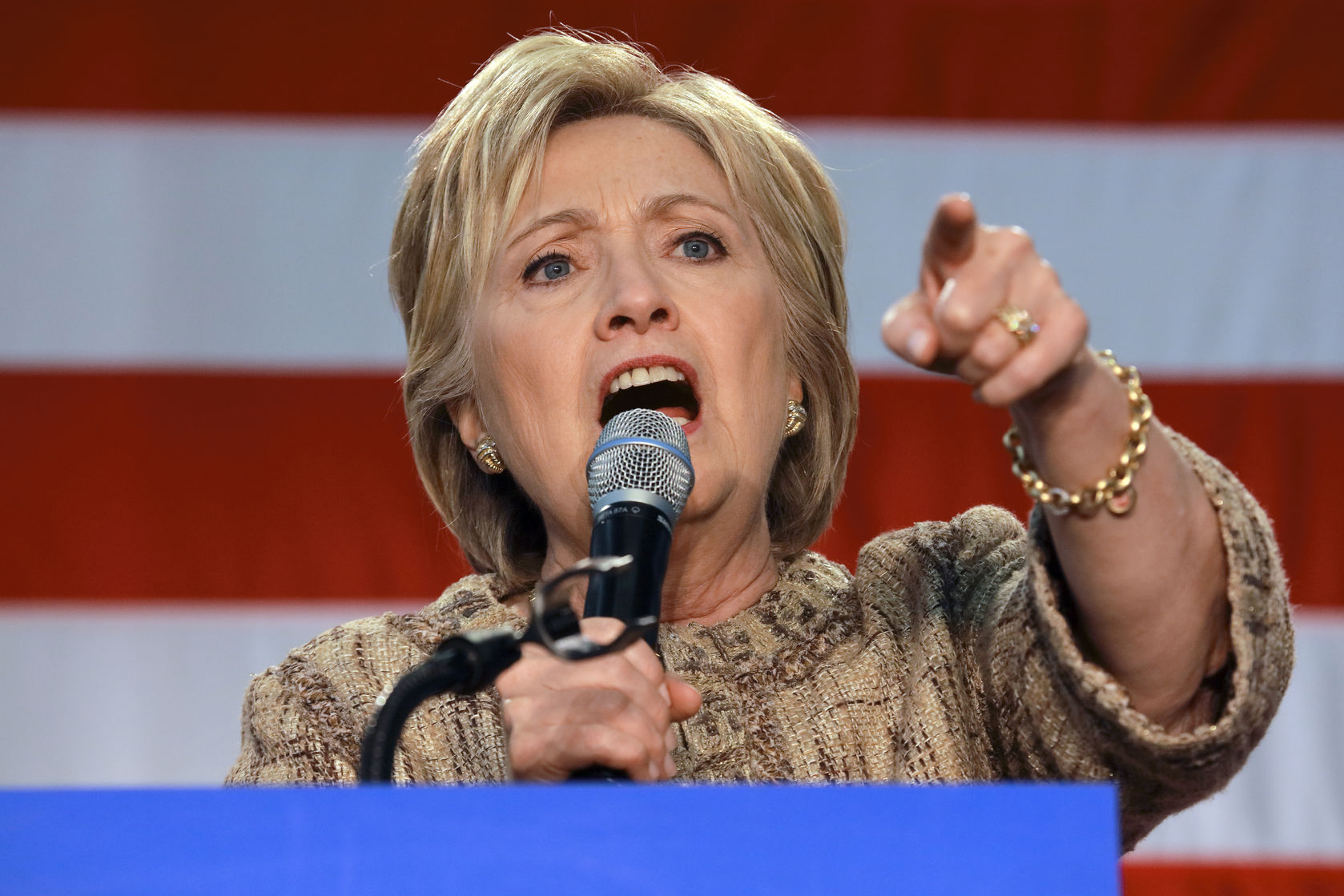Stagnant wages are the dominant theme of this year’s presidential election. Appropriately so. According to the (pro-labor) Economic Policy Institute, the median wage has risen only 6 percent in real terms over the past three decades. Low-wage workers have actually seen a 5 percent decline.
So what are the candidates promising to do about that? Although they often talk about wages, political candidates almost never advocate policies that would credibly make them higher. This year, Donald Trump is an exception. He is advocating a policy change that will increase the income of the average family by an estimated $4,000 a year within the next four years.
And here is a surprise: That policy change has nothing to do with immigration. Or foreign trade. In fact, it is something Trump almost never talks about. For that matter, Hillary Clinton doesn’t talk about it either.
The issue is corporate taxation. At a top rate of 35 percent, the United States has one of the highest corporate income tax rates in the world. But because of deductions, exemptions, credits and other loopholes, the tax doesn’t raise much money. In the process, it is encouraging capital and jobs to go off shore.
Both Trump and Clinton have talked about companies relocating abroad (“inversions” they are sometimes called) and both have gone out of their way to deplore those actions. But deploring is easy. Is there anything that would stop that trend and reverse it?
Buried in arcane policy papers that the average voter rarely sees, Trump has a proposal to replace our complicated, convoluted corporate income tax with a simple, 15 percent “flat tax” on corporate profits. And according to the best economic analysis, that one change will have a huge impact on the American economy.
Boston University economist Laurence Kotlikoff, in a study for the Goodman Institute for Public Policy Research, has analyzed the Trump proposal and reports three findings.
First, the lowering of the corporate tax rate will lead to an enormous flow of capital into the United States, amounting to trillions of dollars. This inflow will substantially boost worker productivity and that will lead to a substantial increase in employee wages.
Second, the proposal doesn’t cost anything in terms of lost government revenue. The loss of revenue from the lower tax rate is made up by the broadening of the tax base (no more loopholes) and by the additional taxes collected due to a larger economy. More capital means more output which means more income and more taxes paid. In contrast to the frequently heard Trump criticism on the left, this is not a tax cut for the rich. It’s not a tax cut at all.
Third, the real beneficiaries of corporate tax reform are not shareholders. Almost all the gains are realized by workers. The rich don’t gain much at all. Or, to reverse the analysis, the burden of today’s inefficient corporate income tax is not falling on capitalists – whose after tax rate of return tends to be determined in the international capital market. The burden of the tax falls almost exclusively on workers.
Who bears the burden of the corporate income tax has been an unresolved question for economists – almost since the beginning of the science of economics. To answer the question definitively, Kotlikoff and his colleagues had to build a first-of-its-kind model to understand how international capital flows in response to taxes in all of the major economies. With that model in hand, they were then able to analyze the effects of variations in the U.S. tax. (See the full results of that effort here.)
In general, U.S. corporations don’t pay taxes on capital accumulated abroad until those funds are “repatriated,” or brought back into the country. Currently there is about $2 trillion of untaxed earnings sitting off shore. As an example of the power of taxes to affect such funds, in 2005 the federal government created a “tax holiday”—allowing repatriated funds to be taxed at a rate of 5.25 percent, rather than 35 percent. In response, about $300 billion flowed into the U.S.
Instead of viewing this experiment as a great success, however, The New York Times editorial page and many Democrats in Congress view it as a failure. The reason? Much of the money, they say, was used to pay dividends or buyback shares of stock rather than create jobs.
This is a freshman level mistake in economic reasoning. When companies pay dividends or buy back stock, the funds don’t disappear into the stratosphere. They are transferred from one holder of capital to another. And that’s a good thing! We don’t want jobs to be created by whoever happens to be holding capital. We want jobs to be created by companies that have the best prospects for productive job creation. To get funds from those who hold them to those who can make the best use of them, we need a fully developed capital market where funds can easily pass form one investor to another.
Corporate tax reform is not Trump’s only economic proposal. He has other ideas on business taxes and personal income tax reform – some of which, quite frankly, need fine-tuning. (See here.) On the other hand, Hillary Clinton has indicated no desire to reform the corporate income tax and virtually all of her ideas on taxing the rich would take money out of the capital market and use it to subsidize consumption. Such “consumption of capital” will surely lower wages in future years. Similarly, her many proposals to regulate the labor market (e.g., paid parental leave) will almost certainly lower wages—especially the wages of women.
I’ll write more about these issues in the future.
PS: Although the Kotlikoff study is very favorable to Trump’s proposal, Kotlikoff is not planning on voting for Trump. To the contrary, he is running against Trump as a write-in candidate.












